A bit of an odd subject, with these onions. Rotten onions, to be exact.
This came by unexpectedly. I did not intentionally picked this subject matter, I think it chose me instead.
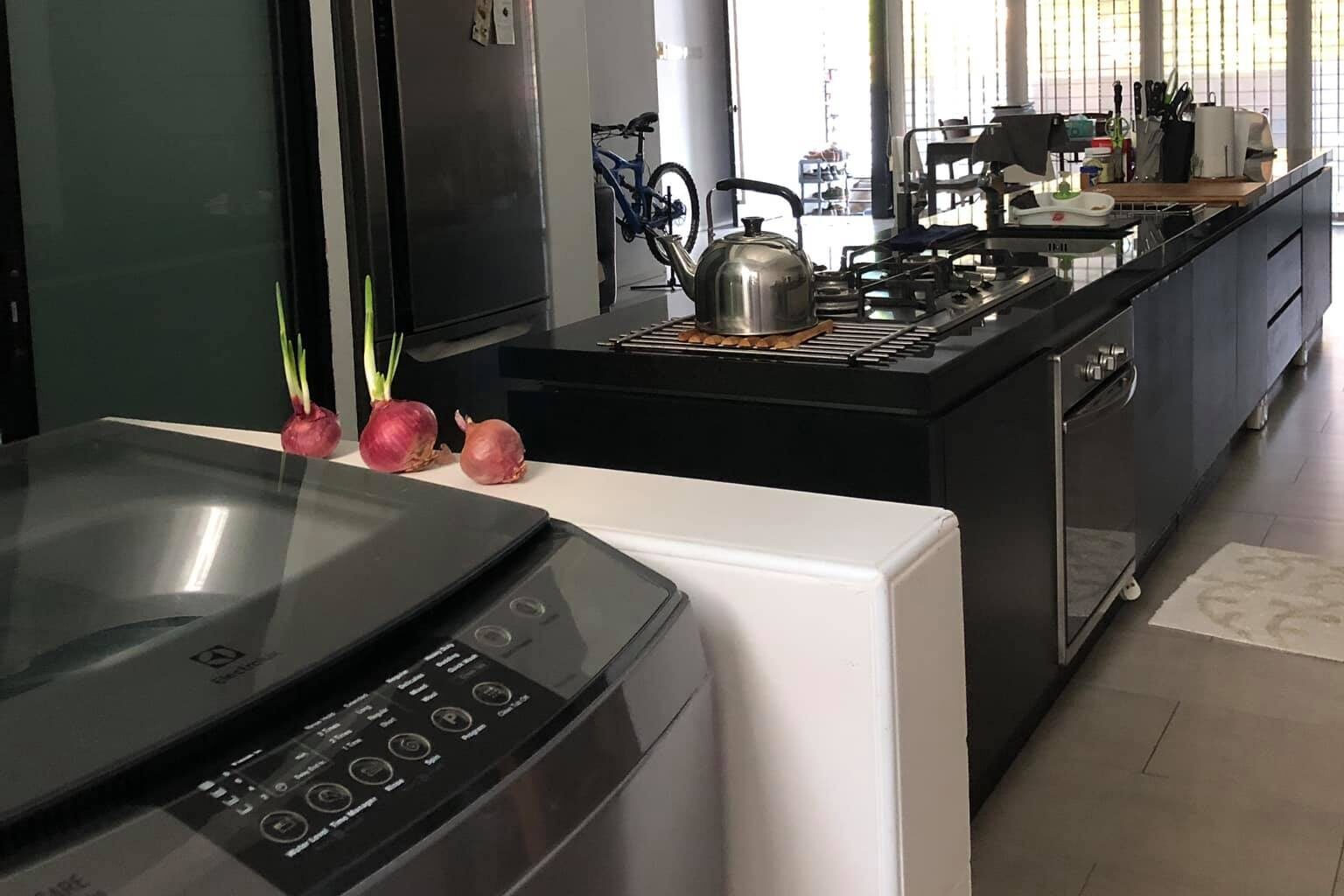
I have not been cooking as often as I would like to lately, so some perishable stuffs tend to rot away. For instance, these 3 red onions.
Strangely, when I was about to dump them into the bin, something held me back. My mind went “Hang on, put it aside for a couple of days and see what happened”.
By that, I definitely don’t have any intention to use them for any cooking for sure. Perhaps a painting of it?? So I left them on that ledge for about 2 weeks and warned everyone in house to not touch nor move them, hubby included.
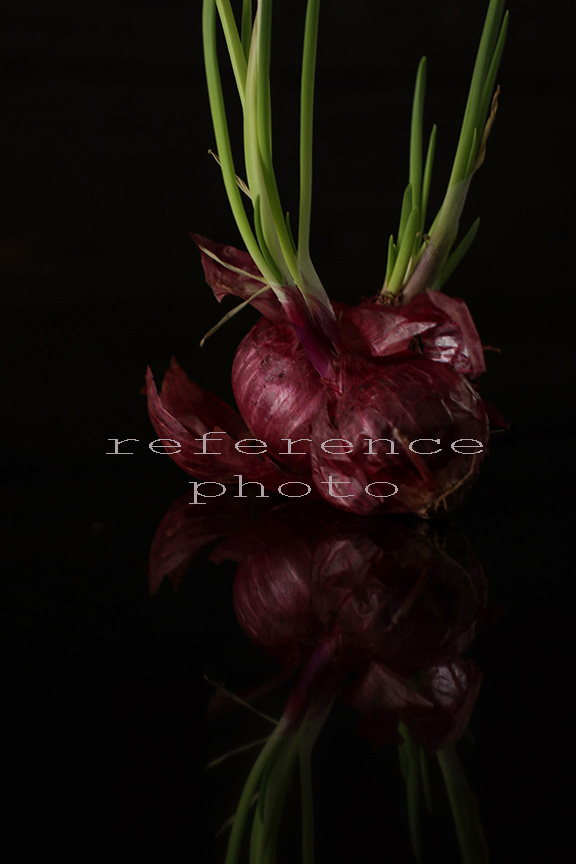
I was dilly dallying before I realised how long the shoots have grown. And the colours!! The contrast between the maroon and green was so striking. It looked delicious for a very dark background painting.
Seeing those luscious scallions growing so healthy and beautifully, just like that, on that ledge, it got me thinking……
Apart from being a unique subject matter, there is a ‘food for thoughts’ element here. It was not just some nature beauty that pleases the eyes, it had a deeper meaning that can be tied to the human life cycle.
And that was how the title came by, “Every End Is A Beginning”.
The process:
Since I knew that the background will have to be very dark but yet the colours of both the onions and the shoots have to ‘pop’ up as well, I have to do this on a white surface. Dark paper will make my work easier BUT the surface will ‘eat’ up the pencil pigments, unless I am using pastel pencils.
Paper : 140lbs (300gsm) hot pressed Arches watercolour paper.
Background/undertone : Faber-Castell Albrecht Durer (water soluble pencils). Used wet, as primer for the dark background.
Main/details : Faber-Castell Polychromos.


Start out using the grid method for size and perspective. Using a mechanical 2B graphite pencil (not need to keep sharpening the tip).
For the background, I shaved the lead of the water soluble pencils (several tones i.e. maroon, indigo, dark green and black). Mix all the pigments in a water, using a broad medium sized flat brush and apply evenly directly onto the paper. Repeat several times, letting it dry a bit in between.
I usually let it sit for at least 24 hours before I apply the Black polychromos pencils (dry) on top of it. Yes, that takes a whole lot of patience and some soothing background music.


I always begin with the less detailed areas. In this case, the reflections. It is muted and the process was very challenging. I have to first work out the entire reflective subject and then use Dark Sepia, lightly, over it. To get an even spread of pigment over the reflections, I use a a large stencil brush to blend it in.

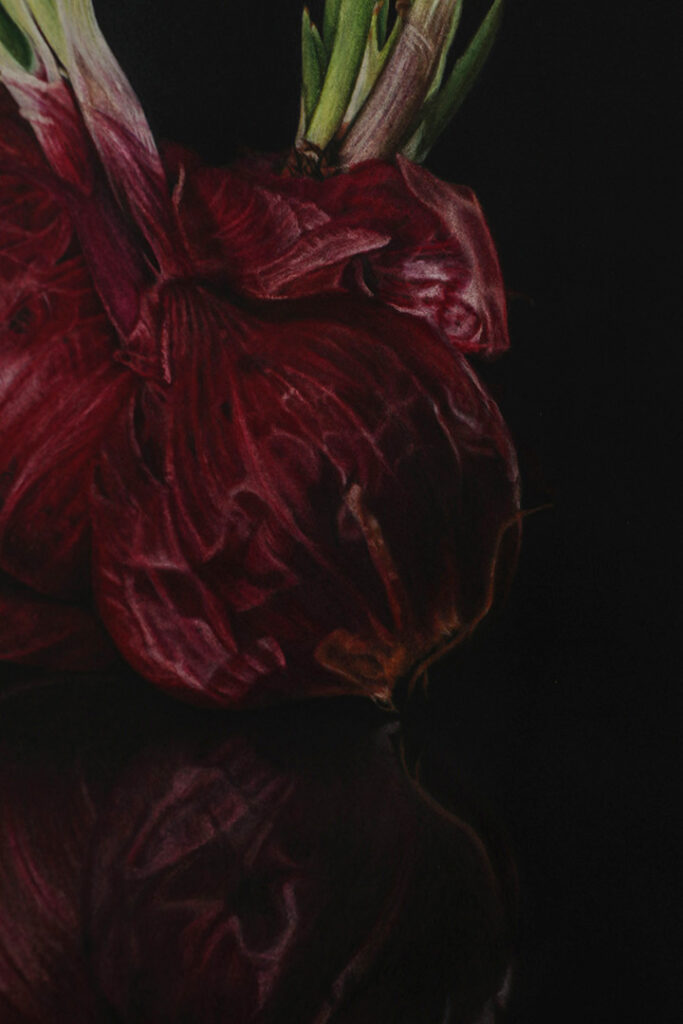
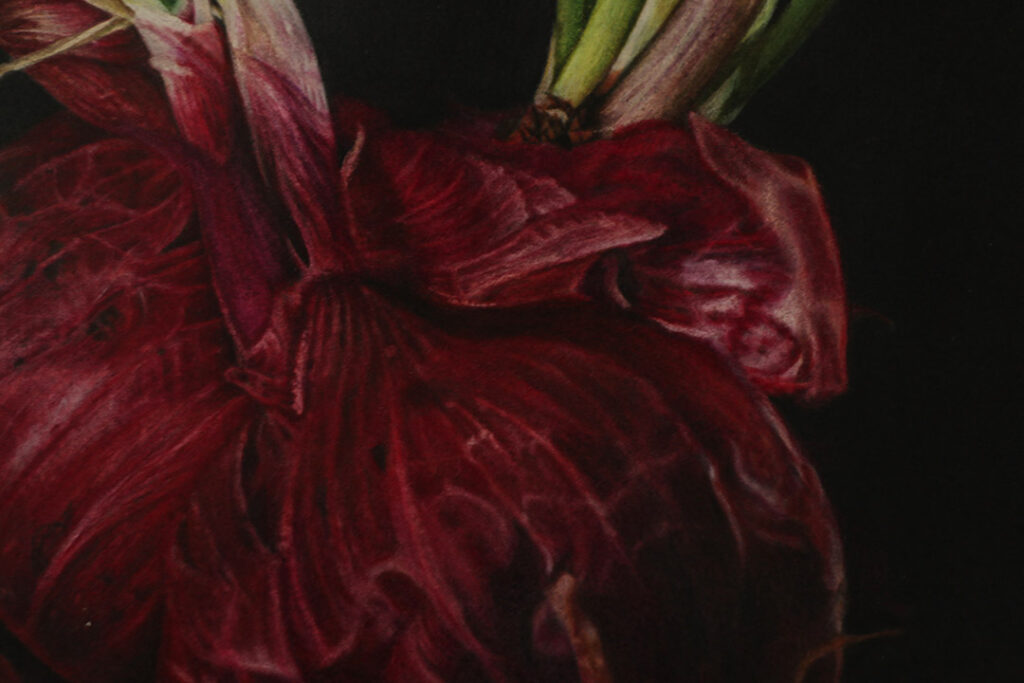
The colours of the red onions were quite a challenge as they are neither very bright nor muted. It was a mix of Red, Fuschia, Violet and Purple. All my not so favourite tones. Not that I don’t like the colours, I do. But personally I find it just too ‘floaty’ and striking. Eyes hurt by staring at it for too long.
When I thought the Reds were tough, then came the Greens!
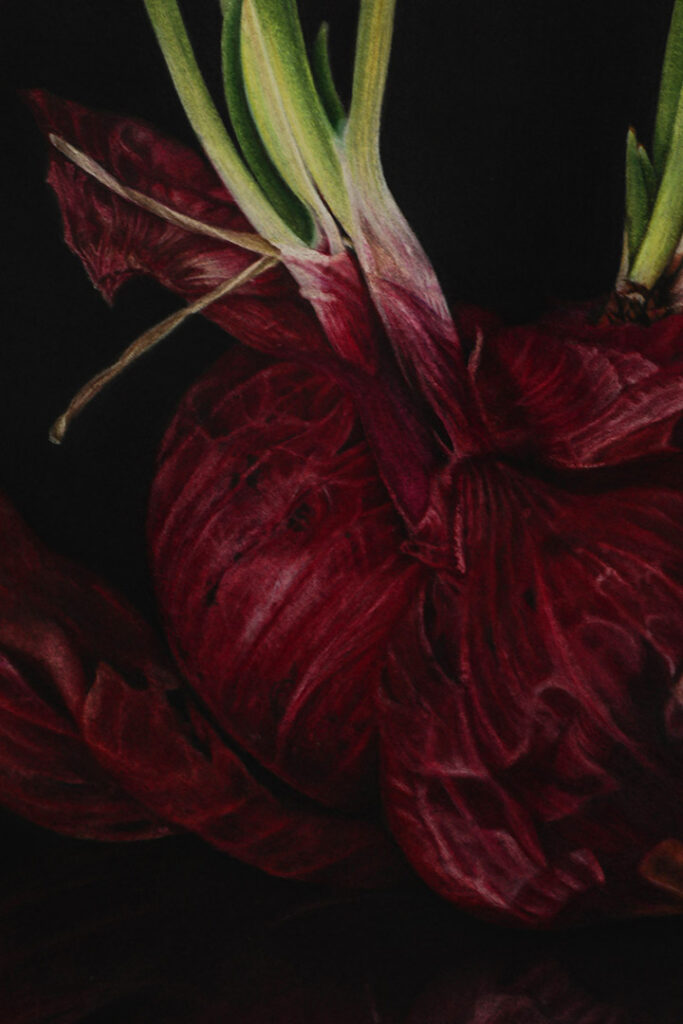
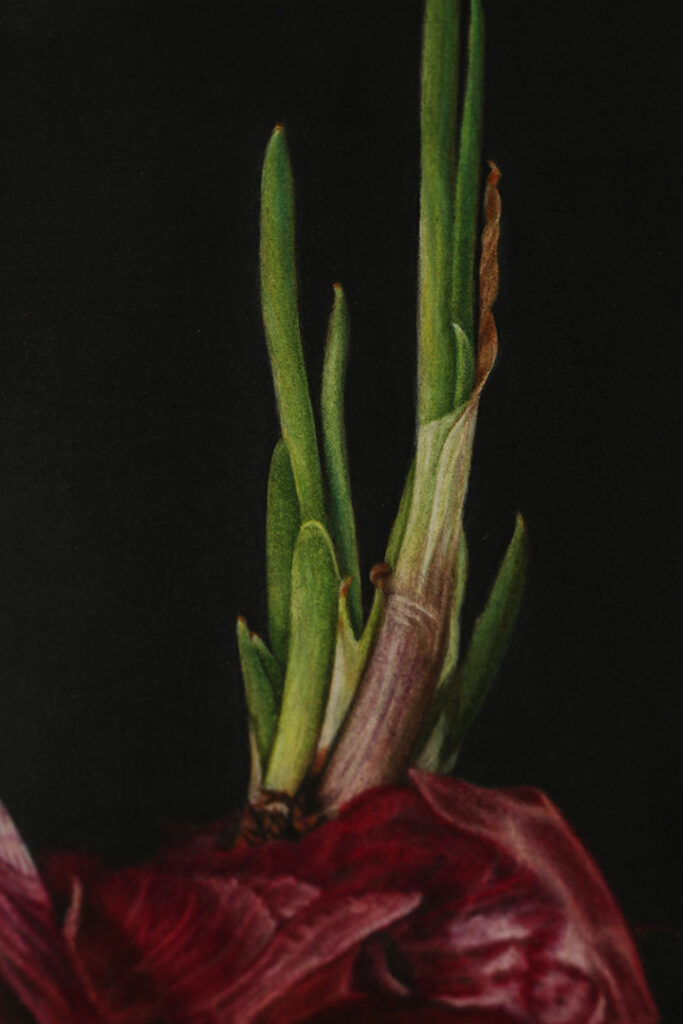
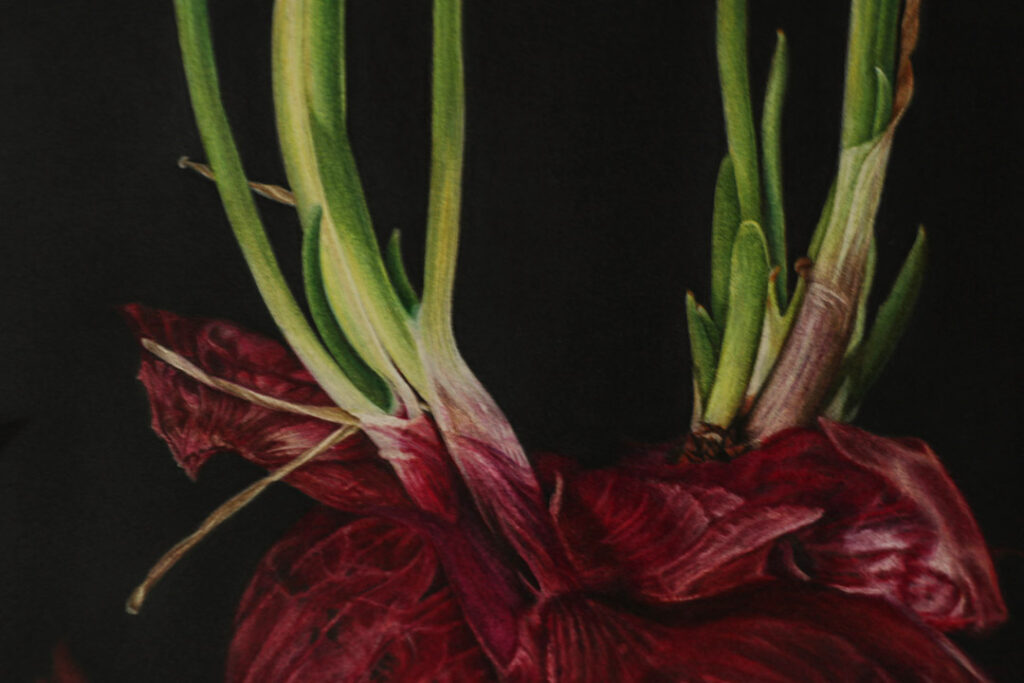
Green tones are another tough one for me. It takes a lot of mixing and blending to make it look natural. There were some Cream, Yellow and a bit of Blue in the mix. Imagine mixing all those tones with colour pencils, not easy, but I think I’d managed to pull through.
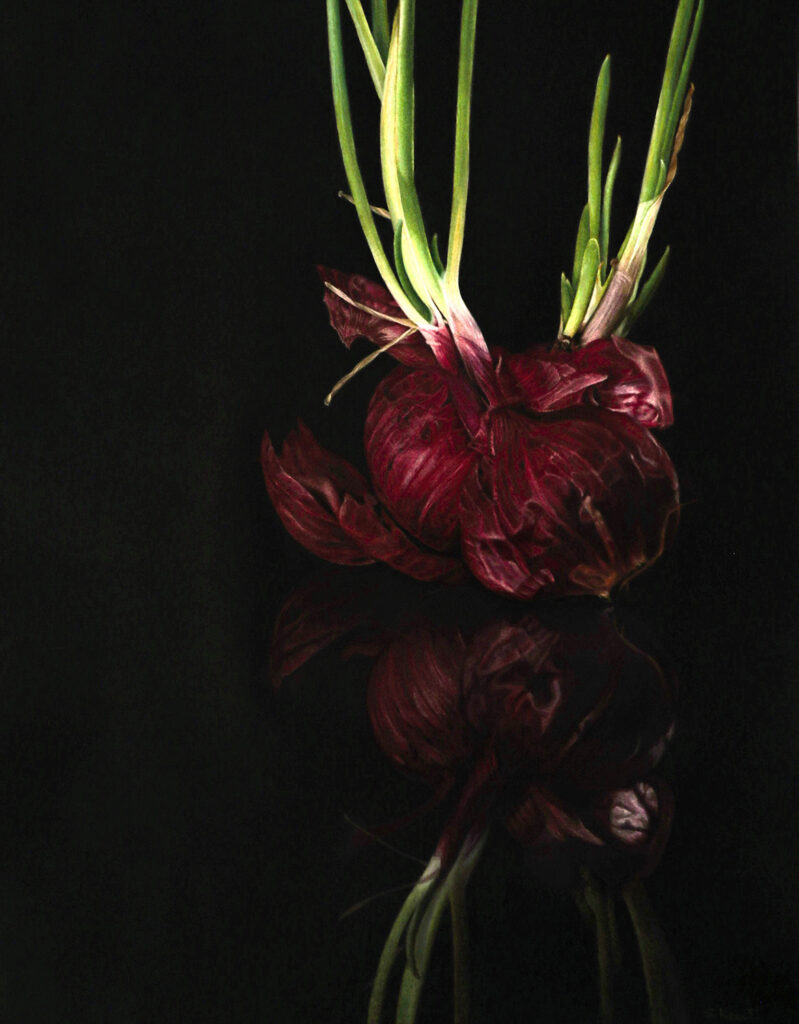
With this piece, I’m trying to emulate the old masters’ still life technique, using colour pencils. It was interesting but not as smooth or fluid as I would want it to be. I know it can be done if I incorporate the blending of tones using OMS (odourless mineral spirit) or a heated board. But for now, I’m not really into it, yet. Maybe, one day, in the future, who knows.
